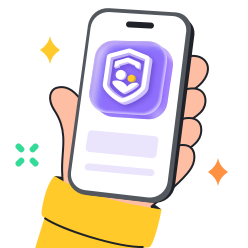If you want to track your location, revisit places you’ve been, and enhance your digital experience then learning how Google location history works is a must. However, using these services raises issues about privacy which all users need to be vigilant about.
This guide will walk you through how to handle privacy, view your location history across various devices, and ways to manage your location settings.
Why do people use Google location history?
Google Location History isn’t just a small feature that records your location, but a powerful tool that helps you navigate life with ease. Not only does this app make things easy for many users, but it also helps with travel, security, and personal needs.
These are five major reasons why people decide to use Google Location History and how it benefits their regular activities.
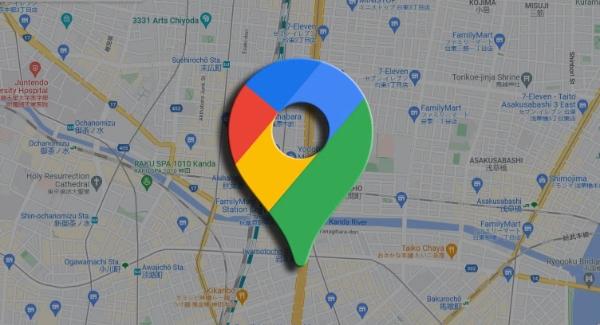


Personalized recommendations
Google Location History stands out because it enhances the functionality of various Google services. It can offer suggestions that match your habits by analyzing the places you visit most frequently, such as your favorite coffee shop, gym, or bookstore.
As a result, you receive advice on other nearby places to visit, quick access to your preferred items, and relevant promotions or events. These unique settings save users’ time and introduce them to spots that truly match their preferences.
Track your travel history
People who enjoy traveling rely on Google location history to remember their travel routes. Your visited places are recorded automatically, which prevents you from manually making any notes.
This information is useful whenever you want to look back on old trips, plan future trips, or reflect on the places you like best. It helps you arrange your schedule, making it easier to share trips with friends or follow your expenses and journey.
Enhance safety and find lost devices
If your phone gets lost, the chances of finding it are better with Google location history. The feature automatically stores the last spotted locations of your devices, and you can see them in the “Find My Device” section. You can use this feature for both security measures and for tracking incident-related behavior, both of which enhance your online security.
Give your loved ones the strongest protection possible.
How to access Google location history
How do I see my Google location history is a question most users should have. If you want to review your past activities, list your steps, or view your location history on your device, here’s how to access it on Google across different operating systems.
Access Google location history on the Desktop:
Step 1. Ensure you access your browser, enter https://www.google.com/maps/timeline.
Step 2. Identify the account where location history is activated, and then sign in.
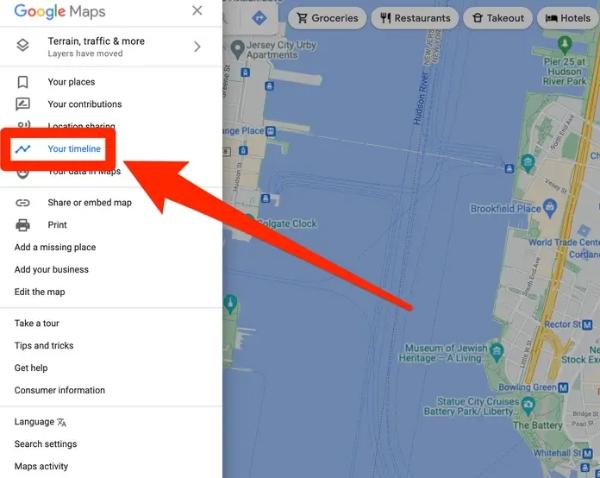


Step 3. Once you’re in the account, you can see a map or timeline showing places you’ve been.
Step 4. Use the calendar on the top left to access specific dates.
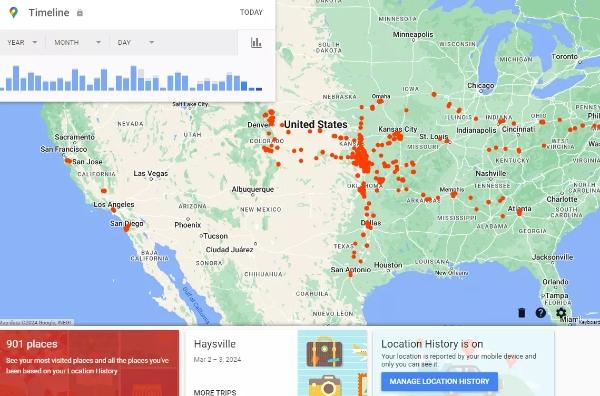


Step 5. Tap on location points to access routes and photos if synced.
Access Google location history on Android devices:
Step 1. On your Android device, ensure you open Google Maps.
Step 2. Access your profile by going to the top right corner.
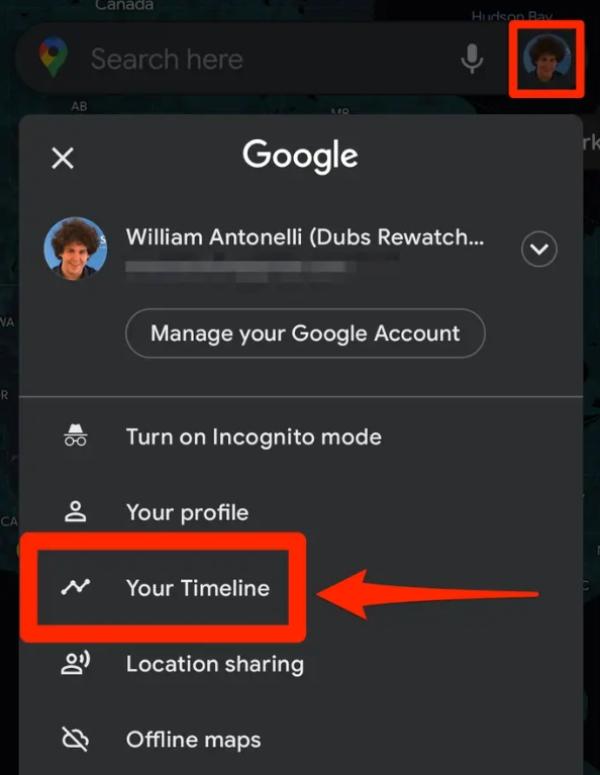


Step 3. From the available menu, click on your timeline.
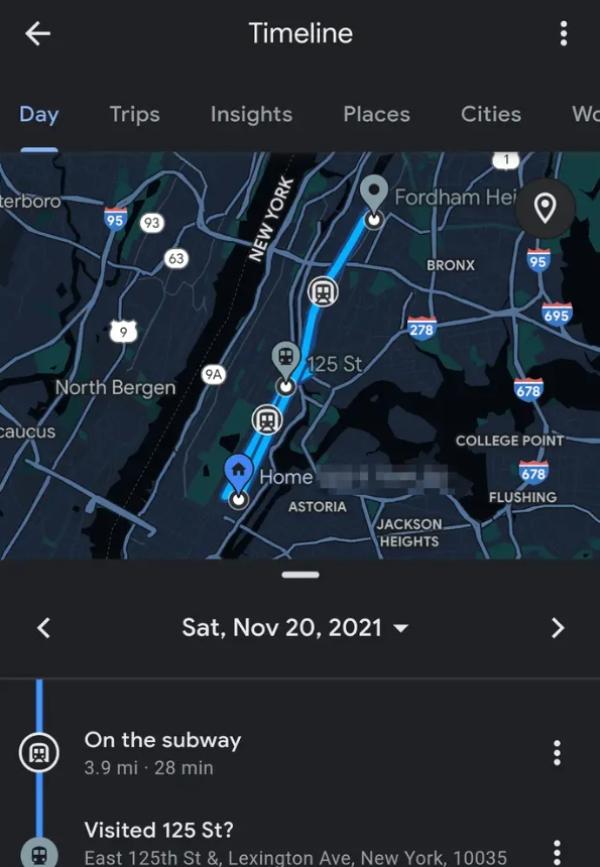


Step 4. Access the calendar and click on a specific date or browse options like cities and places.
Step 5. Tap any entry to view full location details, route paths, and activity logs.
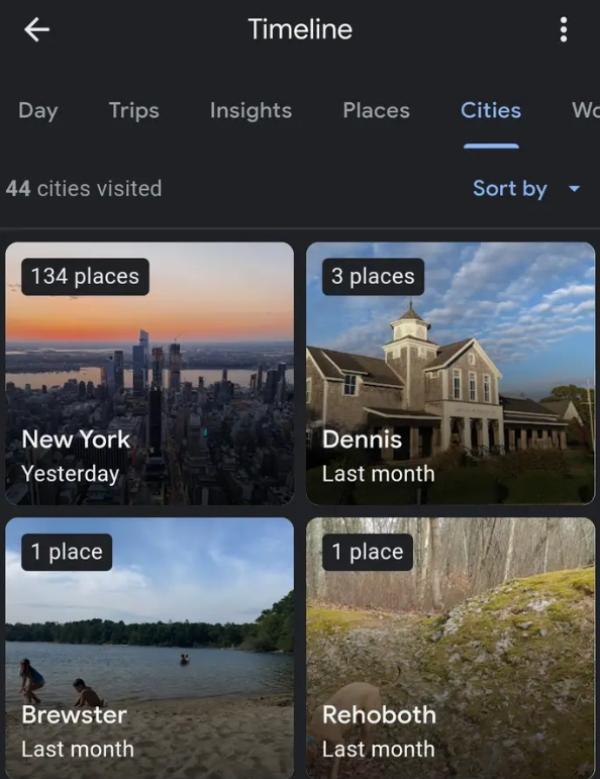


Access Google location history on iOS devices:
Step 1. Open the Google Maps application on your iOS device.
Step 2. Touch the icon of your profile in the top right corner.
Step 3. Click on your data in Maps from the dropdown list, then click “See and Delete Activity” under Web & App Activity or Location History.
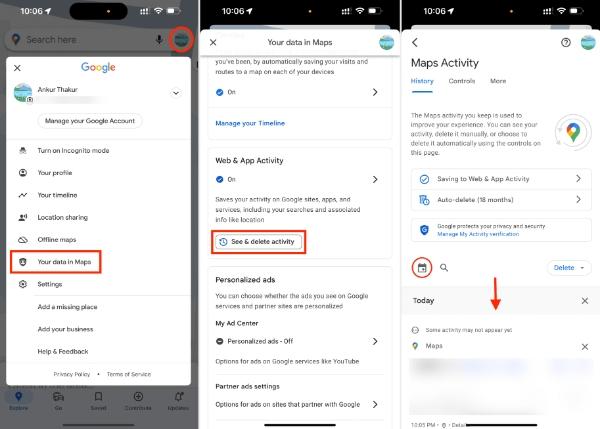


Step 4. You can also look at your upcoming events by using the calendar or category tabs, such as day, places, or trips.
Step 5. Touch on any spot or route to get additional information.
Managing your Google location history
You can find out where you’ve been at any time, thanks to the records stored in Google location history. While it’s useful to know your location history, you should treat such information with great care. This is why you need to learn how to manage your Google location history.
Step 1. Tap your profile picture in Google Maps and then touch the option “Your Timeline.”
Step 2. Select a specific date on the calendar and press a location or route to remove or edit entries you made.
Step 3. On your Google Account, go to your Location History settings and hit “Manage history.”
Step 4. Use the option “Delete all location history” or configure your location history to get cleared after 3, 18, or 36 months.
Step 5. Review the list of locations each month to check that everything shown is only where you’ve been.
How to turn off Google location history
If you care about your privacy, then learning how to turn off Google location history is a good idea. Turning off your location history can help you protect your privacy and stop people from tracking you unnecessarily. All you need to do is use all the instructions or steps below.
Step 1. Access https://myaccount.google.com and make sure you sign in to your account.
Step 2. In the left-hand menu, choose “Data & Privacy”.
Step 3. Look for “History Settings” and choose “Location History.”
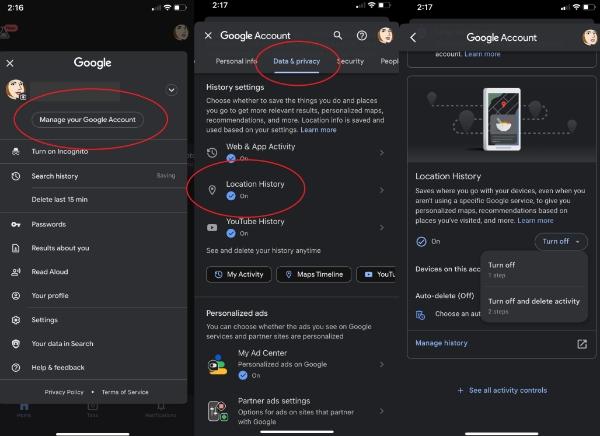


Step 4. You can now choose “Turn off” to stop tracking.
Step 5. Ensure you confirm your choice when prompted.
Common user problems and concerns
Although Google Location History allows you to track your trips and suggests new things to do, many people are concerned about how it handles their data. Some of the most frequent problems people find with it are:
Privacy and data security risks:
Google keeps records of our travels, which could seem intrusive and leave many people concerned about others obtaining this data.
Battery drain and device performance:
The usage of GPS for continuous tracking can result in the battery dying faster and older devices working more slowly.
Inaccurate or misleading location entries:
It is possible that the timeline does not include your actual stops, which may leave you confused.
Shared device confusion:
Data about your whereabouts can end up looking mixed in your Google account if used across different devices in the family.
Can Google location history be wrong?
Yes, there are times when Google location history is inaccurate. Mobile positioning makes use of GPS, Wi-Fi, mobile networks, and sensors in your device to detect your location. If reception is poor or if there are multiple hotspots, your phone could display the wrong places in your timeline, as well as miss some of your stops.
How do I find my Google location history if it’s missing?
When your Google location history is inaccessible, it may be due to one of the following reasons: it is disabled, the app isn’t logged into your account, or there is a sync problem. Go to your Google Account and check that your location history is turned on. Then make sure you’re signed into the right account on both your computer and other devices.
If you still see nothing, launch Google Maps, click on “Your Timeline,” and press the refresh button. Maps might require you to give it permission to use your phone’s location.
Can I recover the deleted Google location history?
No, after your Google location history is removed, it cannot be restored. Information used in searches by Google is permanently cleared for users’ privacy. If you think you’ll need your travel history later on, make a copy using Google Takeout before getting rid of anything.
Tips for staying in control
Google location history can really make a difference, as long as you are using it with purpose. Although you can use it to plot your trips, find your way, and receive personal recommendations, it also records your whereabouts. This is how you can stay in control of your location data:
1. Review your timeline regularly
Reviewing your Google Maps Timeline can make a big difference when you do it once a month. This approach enables you to confirm whether the app accurately records your location and to identify any unfamiliar items. Reviewing the application at regular intervals allows you to identify and fix mistakes, oversee your data, and see what happens behind the scenes.
2. Turn off location history when you don’t need it
It’s only necessary to let location history run when you are using the app. Should you not use your location data for navigation or tracking activities, think about pausing it. In your Google Account, go to “Activity Controls” and switch off the location history to stop saving. If you turn off the locating function, Google won’t track or record your current movements.
3. Set auto-delete for cleaner data
It’s possible for your location history to accumulate over time and include details that are no longer useful. In this case, you can set Google to delete your backup after 3, 18, or 36 months. This keeps your account easy to manage and stores fewer of your personal details.
4. Use the timeline map for visual insight
Besides showing locations, your Google Timeline creates a map of your travels through history. When you look at your history as a map, it becomes simple to notice regular routes, your favorite destinations, or faraway trips.
Maps make it more convenient to review your different trips which helps swap out locations on dates to get a clear picture.
Alternatives to Google location history
Although Google location history is helpful, it doesn’t meet the needs of parents or anyone who wants stronger privacy protection. Fortunately, there are numerous alternative apps that enable people to track locations more efficiently. Anyone looking for updates in real-time, geofencing, or apps that work on multiple devices can try these apps.
1. FlashGet Kids



Protecting kids requires parents to know their exact real-time location to have a clue about where they are and what they might be doing. That means parents need a parental control app with robust features that can help you monitor kids more efficiently. One app that has active features to help parents protect their kids better is FlashGet Kids.
This app allows you to track your child’s location at any time, receive notifications whenever they arrive or leave pre-set areas, and view their screen if required. With FlashGet Kids, you can track your child’s location and also control what they view on their device using screen time.
Pros:
- The app offers geofencing which helps parents know when kids enter or leave marked zones.
- Has screen mirroring which helps you see through your kids’ devices.
- Activity reports help parents know which apps they use and for how long.
- It comes with real-time GPS tracking, which helps you know exactly where your kids are.
- FlashGet Kids offers a remote camera and microphone to listen to and see your kids’ surroundings.
Cons:
The app should be installed on parents’ and kids’ devices to work.
2. Life360
Life360 is probably one of the most commonly used location-tracking apps that has robust features. Though locations are normally private, you have the option to share your whereabouts with people in your circles. Using the app, you can check how your car is being driven, call for help during journeys, or send emergency alerts quickly.
Pros:
- Tracking in groups is possible with the help of adjustable “circles.”
- Crash detection with quick emergency measures
- Teen driving reports focusing on safety
Cons:
- Some features are only available for premium members.
- There may be ads that are intrusive or destructive.
- It has data storage and sharing concerns.
3. Apple Find My
Users can use the Find My app on Apple to find their family, friends, and Apple devices. While it is a great way to track your friends and family members, it only works for Apple users. It features secure sharing, AirTag location tracking, and alerts, making it easy to track a person’s location.
Pros:
- The application can be used directly on iOS, iPadOS, and macOS devices.
- Location information is encrypted from start to finish
- Can be used with AirTags and allows finding a device when not connected to the internet
Cons:
- The device is not designed for Android devices.
- Doesn’t have geofencing notifications or timelines.
- There are no features that track your child’s use of apps or set parental controls.
4. Geozilla
GeoZilla is a handy tracker meant for family safety with a clean and easy-to-use design. It keeps your location, lets you check into places you visit, and records your steps. This tool is good for households that prefer light tracking services and want to use it with optional smart devices.
Pros:
- A basic look and fast installation
- You can use your settings to get reminders and have trusted contacts in case of an emergency.
- Allows you to use third-party smartwatches and wearables
Cons:
- Sometimes it’s slow or offers inaccurate location changes.
- Limited parental controls.
- A few features are available only to premium users.
Conclusion
Google Location History allows you to view your past routes, helping you remember trips and enhancing your safety. Although using the service is easy and helpful, it’s essential to review your privacy settings regularly and ensure that all shared data is protected.
Featuring real-time tracking and custom controls, FlashGet Kids is a better fit for parents to manage their kids. With this app, you can locate your kids more effectively without worrying about losing data.

